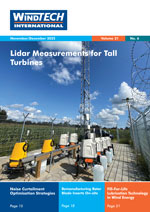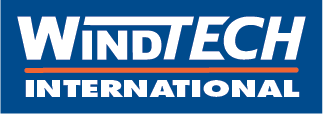Permitting remains a bottleneck to the expansion of wind energy in Europe. However, things are improving. Europe approved significantly more permits for new onshore wind farms in 2023 than in previous years, based on figures published by WindEurope. This is largely thanks to the new EU rules on renewables permitting.
Germany permitted 7.5 GW, marking a 70% increase from the previous year. The contrast is even more significant when compared to 2017-2019 when less than 2 GW of permits for new projects were handed out on a yearly basis. This puts Germany on a promising trajectory to have sufficient permitted projects in the pipeline to bid into the upcoming auctions for a total of 10 GW in 2025 alone.
Spain has shown a similar trend with permits for over 3 GW granted in 2023, again a 70% surge on 2022. Before 2022, permitting volumes were consistently below 1 GW.
In France, there was a 12% increase in permits, reaching 2.2 GW last year. The United Kingdom saw a 10% rise, approving just over 1 GW of onshore projects. But permitting improvements aren’t limited to just the biggest markets. The number of permits was also up, for example, in Greece and Belgium.
This is mainly thanks to the new EU rules. Two things have happened. There was the Emergency Regulation on Permitting and then the new rules on permitting that were agreed as part of the Revised Renewable Energy (RED III). Governments have to transpose the permitting provisions from RED III by 1 July.
A key element in the new rules is Overriding Public Interest (OPI), which applies when projects get challenged in court. Crucially, it reconfirms and clearly defines which permits need to be provided within the 2-year deadline. It requires governments to digitalise their permitting procedures. And for impacts on biodiversity, developers now have to take the whole population of a species into consideration instead of individual animals.
Germany has done an especially good job, rigorously implementing these new rules. The application of the concept of "Overriding Public Interest" (OPI) has already proven effective in expediting several projects entangled in legal disputes. Projects are winning court cases they used to lose. France, Portugal, and Austria have followed suit by incorporating OPI into their legal frameworks. Other countries must do the same.
Other new regulations have played a role all across Europe to speed up permitting. One good example is Spain. Their notable increase can be primarily linked to more permitting staff. And Poland made a significant change by getting rid of its contentious 10H distance rule. Poland now requires turbines to have a minimum distance of 700 metres from settlements. Before it was ten times their own height, making it almost impossible to develop new onshore wind projects in Poland with state-of-the-art wind turbines. The new Polish Government should reduce this further to 500 metres. This change will increase the area available for onshore wind farms in Poland by 100%. The 200-metre difference increases the area of the country open to potential investments from 2% to 4%.
Other countries have started identifying Renewables Acceleration Areas or setting stricter deadlines on certain steps of the permitting procedure. Overall, governments have started the transposition and implementation of the revised RED III. WindEurope is now tracking the implementation of the RED and other national permitting requirements in the Wind Energy Permitting Insights (WEPI) Tool. This will enable a comparison of the situations in different markets and highlights areas where each Member State should make efforts to improve. Access to the WEPI tool is open to WindEurope Members (Category C2 and higher) can access.
Digitalising the permitting procedures
In the Wind Power Package, the European Commission proposed to set up a digital permitting platform to support Member States with the digitalisation of permitting processes. Digitalisation is a key area of improvement in many countries. It remains commonplace for developers to be required to print the entire permit application – and send the physical copies to several public permitting authorities. This leads to substantial costs – often tens of thousands of Euros - and contributes to inefficiencies and delays in the overall process.
WindEurope, AWS, and Accenture have been working on software that can contribute to the solution: EasyPermits can help public administration and local communities to embrace and speed up the whole permitting process. It has been tested successfully in Denmark and Poland already. First results show: the tool helps permitting agents to work on three times as many files simultaneously. After the test period, EasyPermits could be one of the digital solutions applied to streamline permitting in Europe and elsewhere.










